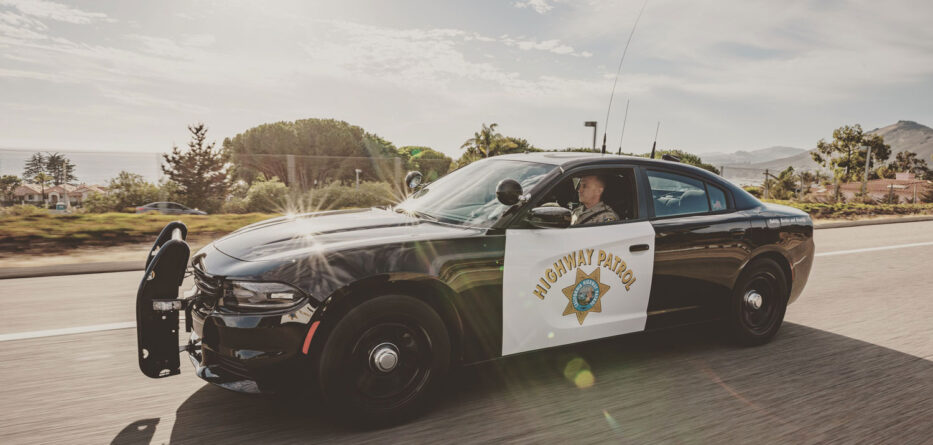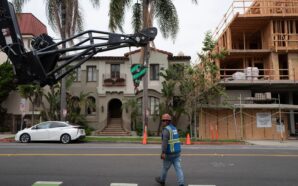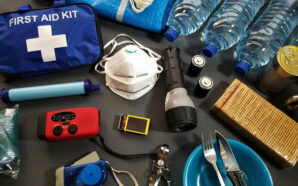It escalated quickly.
A California Highway Patrol officer drove slowly behind a man walking on the road. An Arcata Police officer rode in the passenger seat, a second CHP officer sat in the back.
âScoot up about 10 more feet,â the Arcata officer told the driver. âIâm just going to start firing.â
Charles Chivrell, 35, was disabled and had been diagnosed with schizophrenia, court documents show. And on this September 2021 morning, he was in distress, walking along the rural two-lane road in Humboldt County with a briefcase and a holstered gun â making both rational and incoherent statements as police trailed him.
The CHP officer behind the wheel had tried to convince him to drop his briefcase, to stop walking, to talk to him.
Chivrell, his back to the officers, continued on.
Then, without warning, the Arcata officer opened the CHP vehicle door and fired non-lethal pepper balls in Chivrellâs direction, while the CHP officer in the back seat got out and aimed his weapon.
Chivrellâs body jerked, turned around. He ran as the pepper balls struck him.
âHe drew!â an officer yelled. A burst of fire from Chivrellâs direction. Next, a loud bang â a rifle.
Chivrell fell to the asphalt. His cause of death: a gunshot wound to the back of the head.
Nearly a month later, Arcata Police released edited footage from officers on the scene, showing multiple angles from dashboard and body cameras. But the local department of 22 sworn officers couldnât release what it didnât have: body camera footage from the CHP officer whose shot killed Chivrell.
That officer is among thousands in the California Highway Patrol ranks who do not wear body cameras.
Body cameras a âno-brainerâ
In California and across the nation, body-worn cameras have become a part of many officersâ standard uniforms. While body and dashboard cameras are not mandatory in the state, large and small agencies have begun seeing the cameras as tools of transparency â and a way to keep officers and the public safe.
The shooting in Humboldt County was recorded by at least three different Arcata cameras and one CHP dashboard camera, videos that recently were viewed by CalMatters.
The CHP, one of the stateâs largest police forces with a $2.8 billion budget, only has body cameras for 3% of its budgeted 7,600 uniformed officers.
âAt this point, body cameras are a no-brainer,â said Nicholas Camp, an assistant professor at the University of Michigan who uses body camera footage to study officersâ communication and their encounters. âItâs one of the few reforms that both the (American Civil Liberties Union) and police agencies have supported. So it is surprising that such a large agency hasnât adopted them.â
Californiaâs highway police make around two million stops a year, encounters that mostly happen within range of dashboard cameras. But, the agencyâs tentacles extend beyond the stateâs crowded highways.
Highway patrol officers bust thieves, enforce evictions, police drag races, manage Capitol protests, protect the governor and respond to deadly shootings.
âDue to the nature of the CHPâs enforcement contacts, in-car cameras provide the most benefitâŠâ
FRAN CLADER, CHP SPOKESPERSON
Gov. Gavin Newsomâs current budget proposal seeks to expand the CHPâs organized retail theft investigative unit, from $6 million in 2022-23 to $15 million by 2026. The unit targets the large smash-and-grab thefts, including a series that broke out in Northern and Southern California over the holidays.
CHP acknowledged it only has 237 body cameras agencywide, all in the Oakland and Stockton areas. A spokesperson said the department is focused on upgrading its dash cameras.
âDue to the nature of the CHPâs enforcement contacts, in-car cameras provide the most benefitâŠ,â wrote spokesperson Fran Clader in an email to CalMatters.
She said the agency will continue evaluating whether to expand its body camera usage.
In the meantime, some local agencies say theyâre happy to fill CHPâs technology gaps.
âWeâre a small department, and for us to be able to help a statewide agencyâŠwe donât do that very often,â Arcata police chief Brian Ahearn told CalMatters.
â(The local CHP office) could not have been more grateful for us to provide our video ⊠to illustrate to the community the entirety of the event that led to the use of deadly force,â he said.
Bottom of Form
State âdropped the ballâ on body cams
In 2015, the California Highway Patrol was at the top of some legislatorsâ lists to receive funding for body cameras. As the nation grappled with protests against police brutality, Assemblymember Reginald Jones-Sawyer â then chair of the California Legislative Black Caucus â lobbied to ârequire all California Highway Patrol officers to wear video cameras,â he wrote in an editorial for the Sacramento Bee.
âIn some ways, we dropped the ball. Weâre not going to drop it anymore.â
ASSEMBLYMEMBER REGINALD JONES-SAWYER OF LOS ANGELES
Jones-Sayerâs $10 million pitch to give all CHP officers body cameras eventually was whittled down to a $1 million pilot program in the agencyâs Oakland and Stockton areas. A year into the pilot, officers recorded nearly 93,000 videos, but the program was never expanded.
âLetâs be clear, they never wanted to do any of it,â said Jones-Sawyer, a Democrat from Los Angeles. âIf it wasnât for me pushing for the pilot program, they never would have had the 200 (body cameras).
âIn some ways, we dropped the ball,â he said. âWeâre not going to drop it anymore.â
While CHP experimented with its limited pilot program, many local law enforcement agencies in California have gone all-in on body cameras.
For example, the Los Angeles Police Department, which has a smaller budget, has given body cameras to more than 7,000 uniformed field officers, or about 73% of its force.
Carrie Lane, chief executive for the California Association of Highway Patrolmen, says its members support body cameras.
âThey recognize body-worn cameras can be a benefit to the public by providing greater transparency that helps engender trust,â Lane said in an email response to CalMatters. âThe challenge of body-worn cameras is, and always has been, cost.â
Other states lead California on body cams
The same year former Gov. Jerry Brown signed off on the pilot program, South Carolina passed a law requiring fully funded police agencies to give their officers body cameras. Since then, Colorado, Connecticut, Illinois, Maryland, New Jersey, and New Mexico have all passed laws mandating body cameras for officers, according to the National Conference of State Legislatures. Last year, New York introduced body cameras for all of its state troopers.
In California, itâs a different story.
CalMatters queried more than a dozen of Californiaâs largest police and sheriffâs departments and found that nearly all had at least some body cameras. Among the varying policies:
- Police departments in Los Angeles, Arcata, Bakersfield, Fresno, Oakland, Sacramento, San Jose and Stockton have given body cameras to all of their uniformed patrol officers. So have the Kern, Sacramento and San Diego county sheriffsâ departments. Some agencies have extended their body camera usage beyond just patrol officers.
- The Los Angeles Sheriffâs Department, the stateâs largest law enforcement agency, has outfitted 37% of all sworn personnel with body-worn cameras, according to the agency spokesperson.
- The Long Beach and San Francisco police departments and the Orange County and San Francisco county sheriffâs offices have given some of their officerâs body cameras.
The San Bernardino County Sheriffâs Department was the only agency among those contacted that said it had no body or dashboard cameras. In contrast, the Sacramento Police Department provides both body and dashboard cameras for all of its officers and marked vehicles.
Bottom of Form
Dashboard cameras also have been shown to be crucial when evaluating police encounters. A recent study shows when people view dashcam footage, they are more likely to assign blame to officers than when they watch body camera footage of the same incident.
âIn some ways, you get more visual information about whatâs going on from the dash camera,â said assistant professor Camp. âOne thing that body cameras get us, which I think is important, but overlooked, is the audio. You canât get that from a camera thatâs mounted on an officerâs car quite a distance away.â
As for the highway patrol, itâs betting on improved dashboard cameras. The agency is nixing the grainy, DVD-based cameras it has used statewide since 2010.
The departmentâs new dashboard system will be wireless, capable of incorporating body cameras if the agency goes that route, and installed in every marked vehicle. The price tag:Â $52 million, which then-Gov. Jerry Brown approved in the stateâs 2018 budget.
âOnce that is completed, the new system will be capable of incorporating body-worn cameras in the future,â wrote Clader, the highway patrol spokesperson.
A family mourns
For now, families like Chivrellâs must rely on grainy CHP dash cam footage and body camera shots from other agencies when looking for answers.
In January, Charles Chivrellâs family filed a wrongful death lawsuit in the U.S. Northern District Court of California. The federal suit targets the City of Arcata, the Arcata Police Department and the California Highway Patrol, along with some named officers, for the shooting.
The lawsuit calls Chivrell âa mentally-ill man who was stalked by law enforcement officersâŠas he walked along public roadways.â
The complaint alleges that â(the officers) failed to utilize appropriate procedures for communicating and confronting persons suffering from mental illness, such as de-escalation techniques.â
Attorneys for the CHP and Arcata have filed motions to dismiss, which will be heard June 2.
âThe more evidence you have that establishes what really happened, the better off everybody is.â
MARK MERIN, SACRAMENTO CIVIL RIGHTS ATTORNEY
The familyâs attorney, Mark Merin of Sacramento, told CalMatters that the shooting caused Chivrellâs family to move away from the area.
âItâs very disorienting for them, destructive,â he said. âItâs a very bad situation.â
Merin said he believes that all officers should wear body cameras, and turn them on when they interact with the public.
âThe more evidence you have that establishes what really happened, the better off everybody is,â said Merin. âThereâs no justification for not wearing a body camera.â






